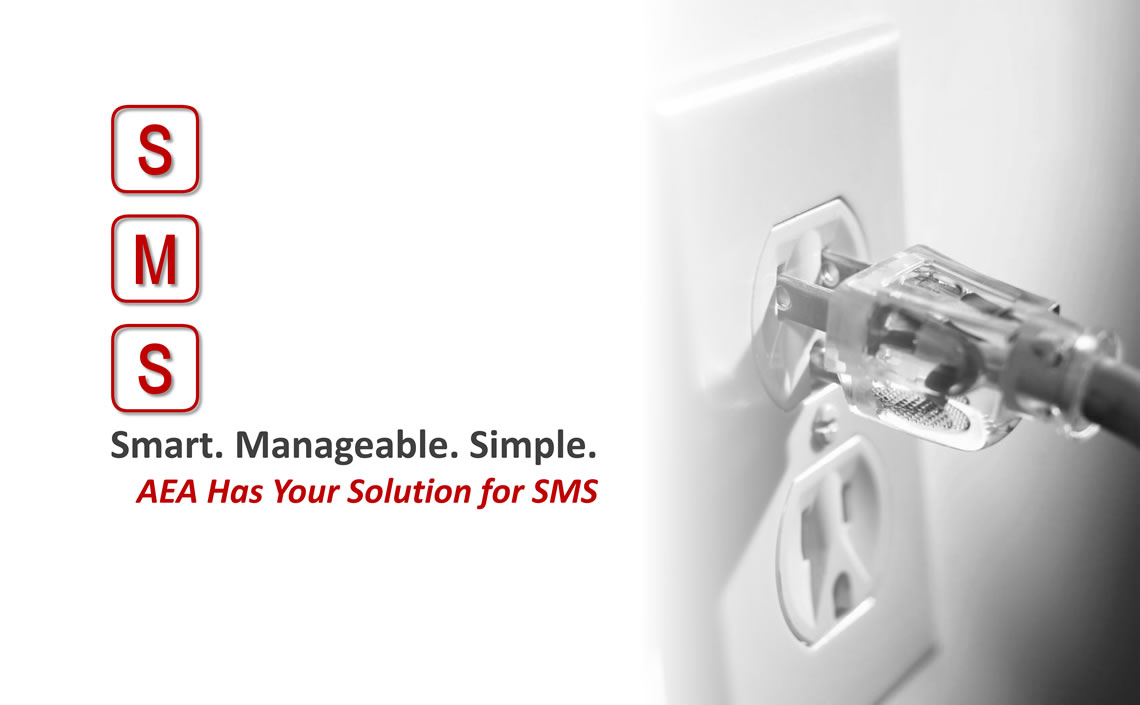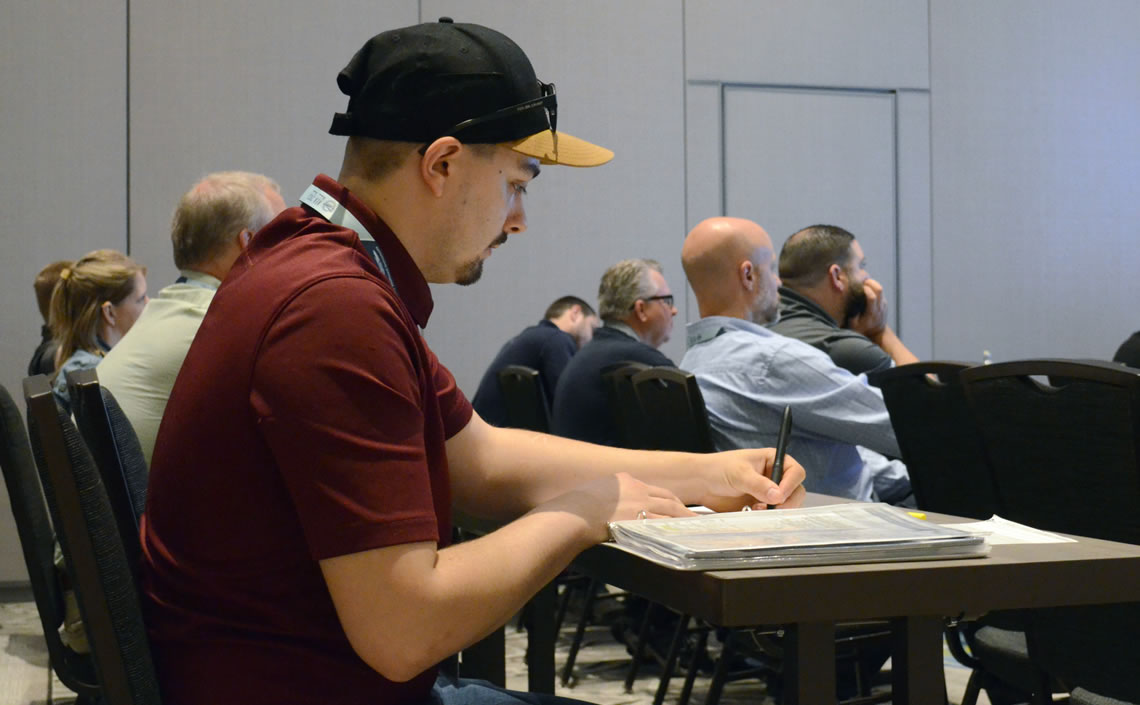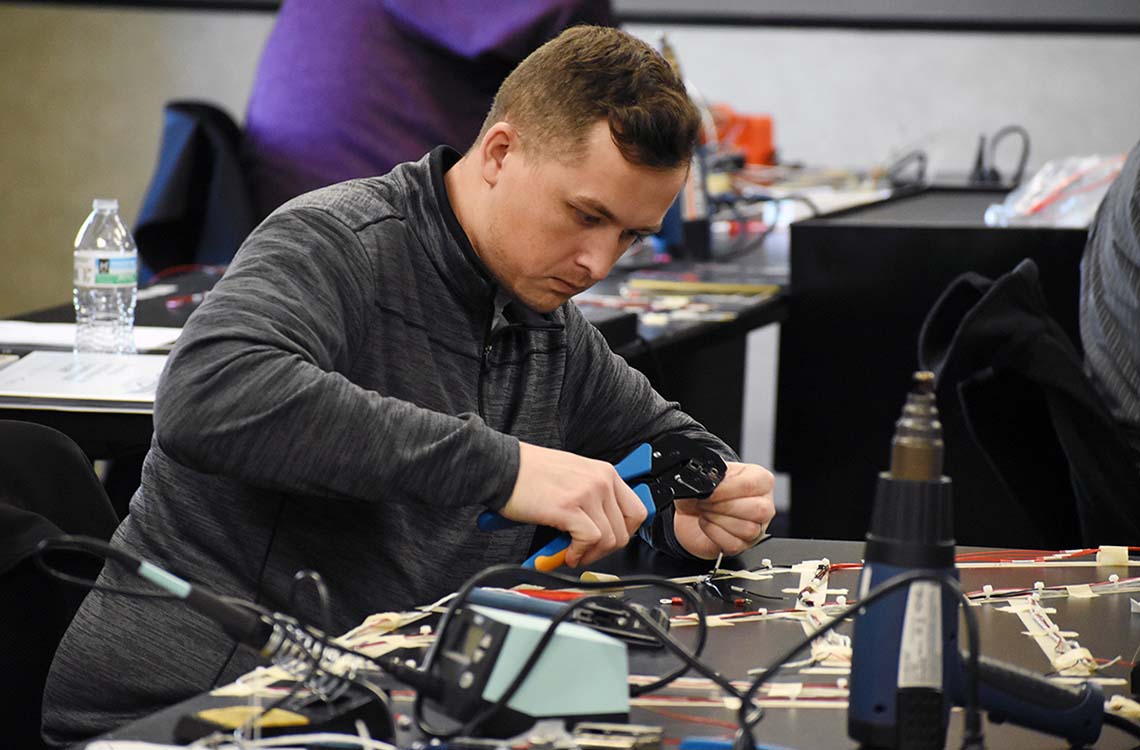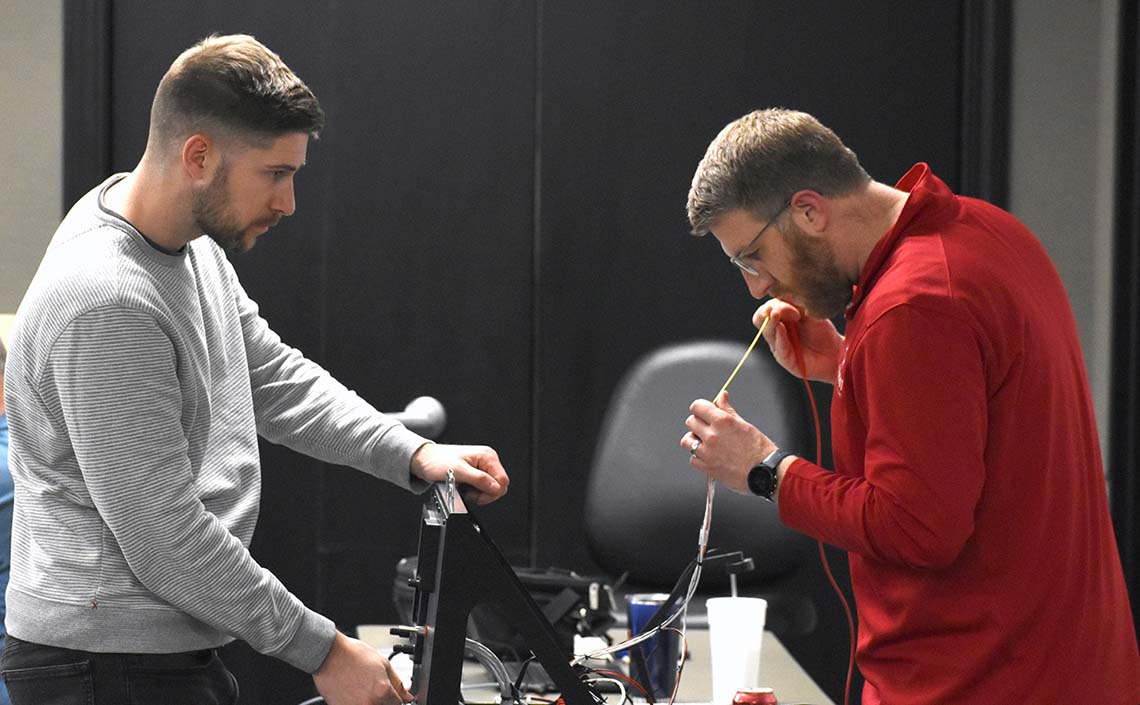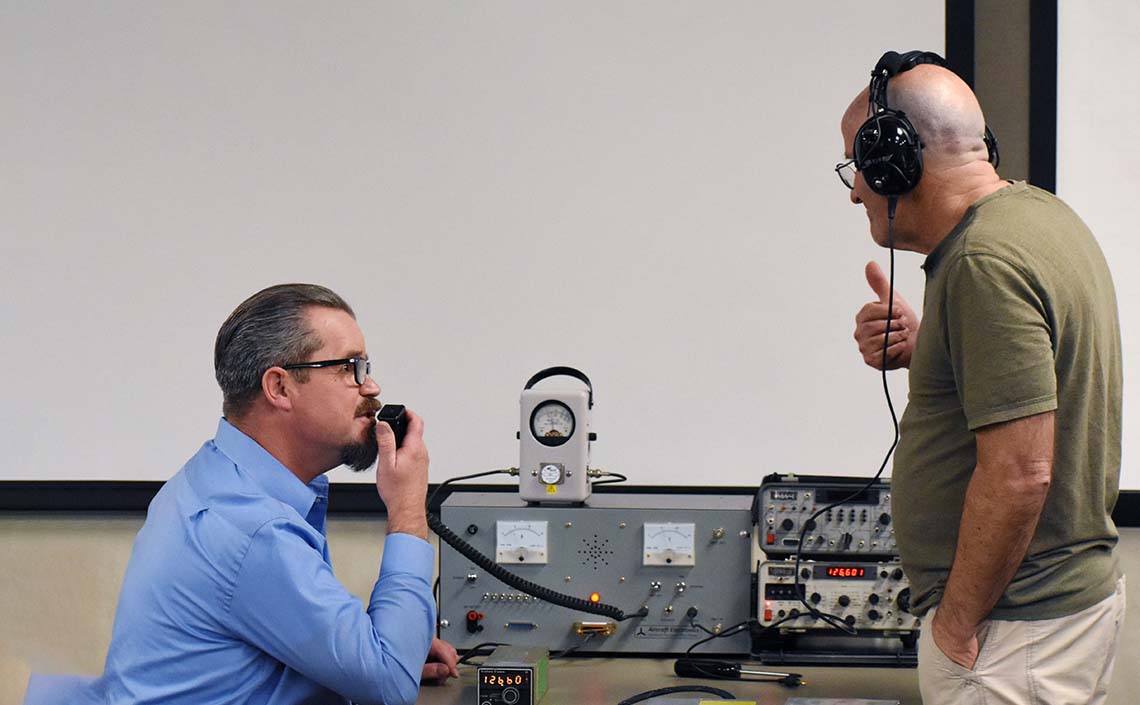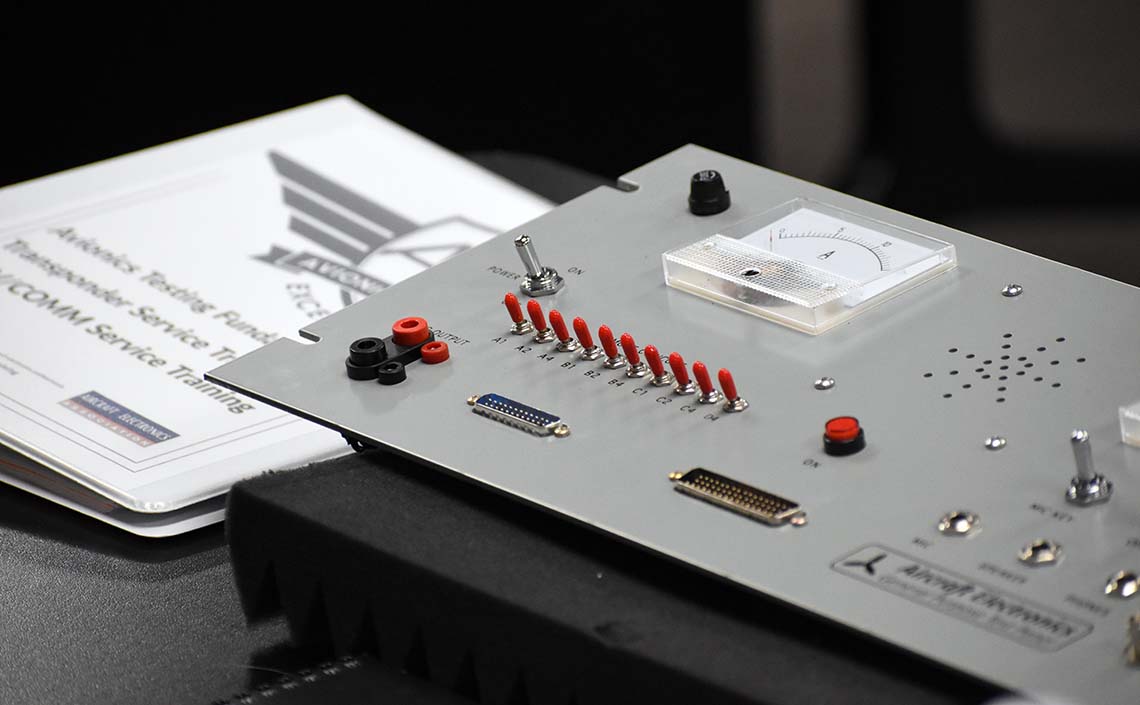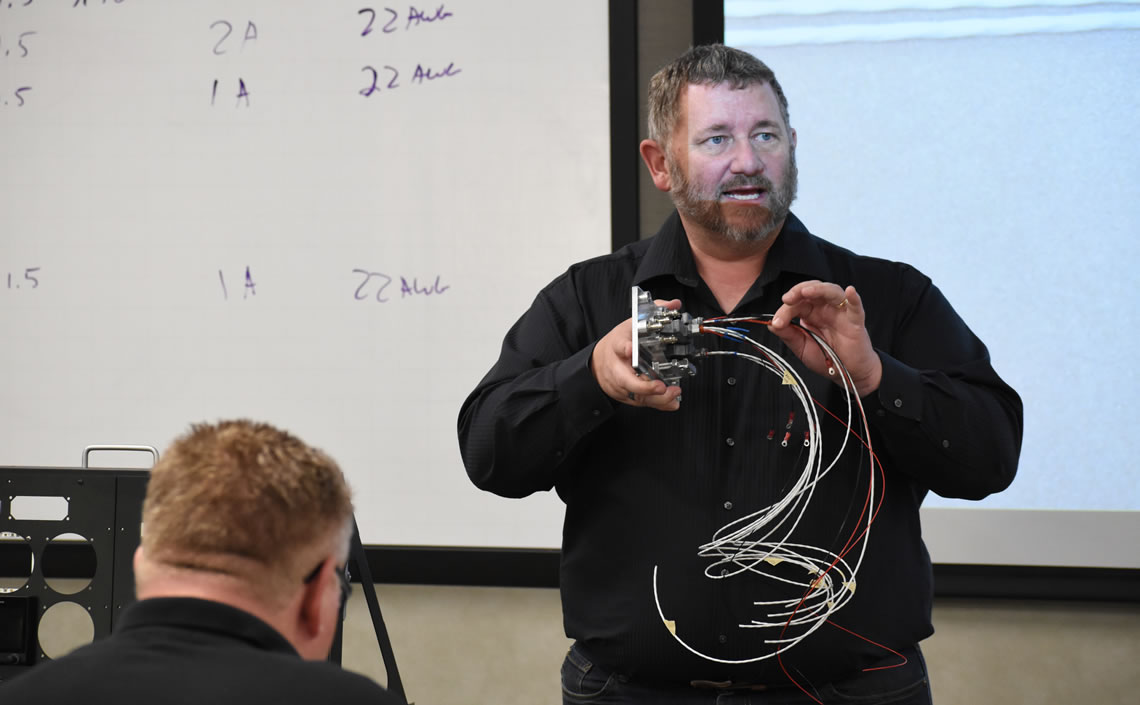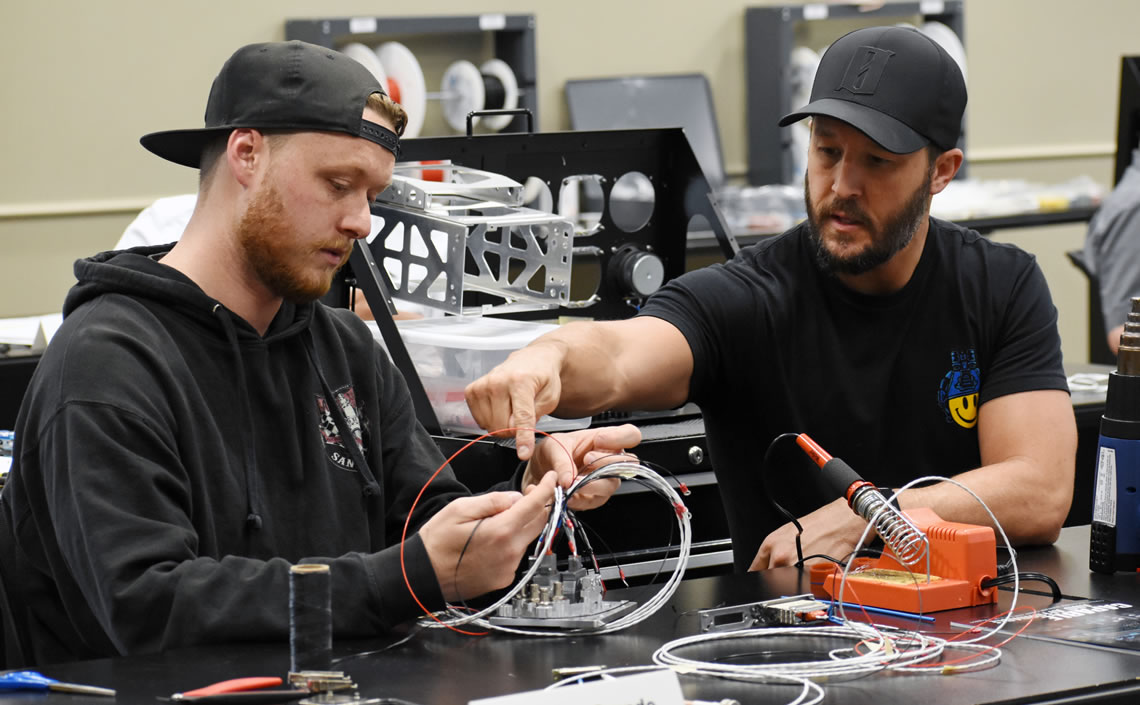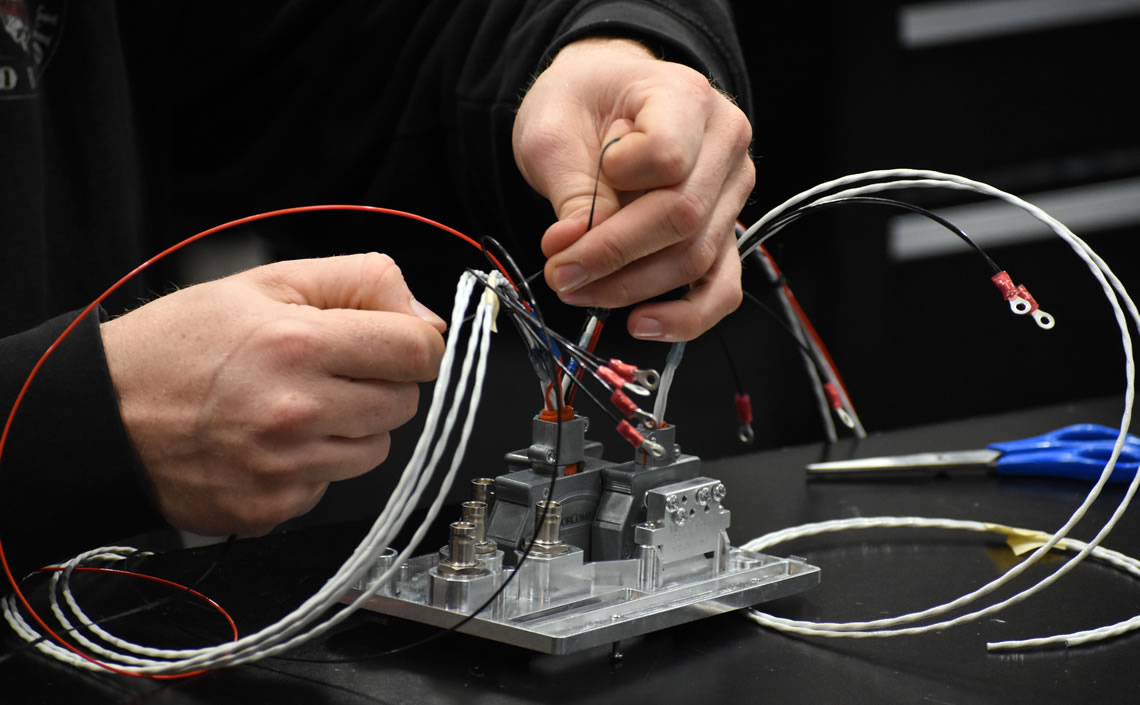Course Date & Time
August 20,
2025
10 a.m. - 3 p.m. CT
AEA Headquarters
This course is designed to provide maintenance personnel with the knowledge and skills required to operate and configure AVX-10K to verify and maintain transponder, UAT, TCAS, DME, ILS, VOR, Comms and ELT. Plus a complete review all features and benefits of the AVX-10K Flight Line Test Set with emphasis on testing transponder (Mode S and ADS-B In/Out), UAT, TCAS and DME.
Presented by: Mark Anderson, business development, VIAVI Solutions
Course Objective:
AVX-10K - Provide students with understanding and working knowledge of IFR6000 operation with review of controls and indicators, unit connectors, and screens for setup menu, ATCRBS, Mode S, ADS-B, TCAS/TIS, UAT, and DME.
In-depth training will be provided for testing of ADS-B transponder systems with airborne equipment. Instruction will include testing of all AC 20-165B parameters in addition to avoiding high-priority avionics behavior issues of ADS-B installations identified by the FAA. This course will also discuss troubleshooting strategies to repeat or confirm issues and identify solutions. The student will be familiar and knowledgeable of ADS-B system test and troubleshooting methods using the AVX-10K and associated ground support equipment to perform complete AC 20-165B performance testing of installed systems. Familiarization, setup and testing using the AVX-10K for ILS, VOR, Comms and ELT. Use the AVX-10K for troubleshooting feed lines and antennas.
Provide students with understanding and working knowledge of AVX-10K operation with review of the following:
- Controls and indicators on the AVX-10K.
- Menu structures and settings while testing.
- Setup of the AVX-10K for testing a transponder, TCAS and ADS-B device.
- Saving and transfer of test results files.
- VSWR and DTF (distance to fault) troubleshooting.
- Remote control operations (MobileTech phone/tablet applications and Smart Access Anywhere).
In-depth training will be provided for transponder, ADS-B and TCAS testing. Target generation for ADS-B 1090 frequency and UAT 978 frequency
Course Prerequisites:
- Understanding of avionics systems/transponder operations.
Course Goals:
Upon successful completion of the course, students will be able to demonstrate understanding and proficiency in the following:
- Testing and troubleshooting of ADS-B/UAT installed systems.
- AC 20-165B performance verification.
- Setup and provide test signals for testing ILS, VOR, Comms and ELT installations.
- Troubleshoot and repair feeder coaxial cables and antennas using the SWR feature of AVX-10K.
- AVX-10K test capability and operation for all systems supported.
Colton E.
4.4
I highly recommend.
Eli J.
4.6
Instructor was knowledgeable and helpful.
Annalise I.
4.8
Very informative course, gives a better InSite of the equipment.
Jotham K.
4.8
Great course and hands on experience.
Eduardo P.
5
Excellent training!
Ramopn B.
5
All good info. Was clear and concise. Interaction with unit & explanations were clear.
William W.
5
Good information. Good for new to test equipment.
Melissa H.
5
Very informative and hands on availability, Good information to take with you for future reference.
Coleby M.
4.8
A very in-depth & hands on training lecture. The instructor can answer all questions,
Jon S.
5
Great educational class to get you started for testing AVR-10K & IFR 6000/4000
Christian L.
5
Lots of knowledge to take advantage of.
Thomas J.
5
Very informative, very clean facility, great staff and always has good instructors.
Joe S.
5
New or experienced user will learn something from this class.
Pedro M.
5
Ask questions
Matt P.
4.2
Great class for any experience level
Issac S.
5
Learn more about the AVX-10K before you come to class.
Nicholas M.
5
Its very knowledgeable and great for people who don't know hot to use the equipment,
Jonathan P.
5
Great class, instructor made it enjoyable to learn the material and answered any question asked.
William J.
5
Well worth the time to better understand how the test equipment interacts with the A/C systems.
Grady O.
4.8
Go to gain knowledge. Dave is a great guy.
Zack B.
5
Great course to get you started with using AVX-10K.
Aaron .
5
Dave was extremely knowledgeable and had answers to all questions.
Mike I.
5
Do it, it's worth it.
Kurt D.
5
Very well done for the basic operation of the test equipment ifr6000/4000 AVX-10K
Scott K.
5
Definitely worth the trip & effort to attend
Alex M.
5
Strongly recommend this course. Great detailed breakdown of functions and use.
Andy B.
5
A must needed course for experienced & rookies to the trade.
Karl E.
5
Worth the time, take advantage of hands on, and one on one opportunities.
Bruce C.
5
Just pay attention
Timothy B.
5
Very useful to help understand how to operate equipment.
Joesph F.
4.8
Class is well paced and provided plenty of one on one and hands on opportunity.
Stefan B.
5
Must attend if you own, operate, or intend to acquire this equipment. For all experienced levels.
Frank P.
5
Take the class you will learn a lot and enjoy the class.
Ken G.
4.8
If you need some real useful, flightline friendly info, then invest in the people who'll be doing the work with these programs.
Juan L.
5
Very complete class. I highly recommend!
James H.
5
This class is pretty much required to get the most out of your IFR4000/6000. It's worth your time and money!
Victor V.
5
Please come. I am happy I came!!!
Isaac G.
5
Must come to seminar, lots of great info.
Alfonso C.
5
AEA Classroom is the way to go!!!
Connor S.
5
Must send for every tech to save time on trouble shooting
Chris F.
5
Worth it!
Julia R.
5
Very informative
Michael A.
4
Class is informative and helpful.
Jason H.
4.6
Informative, in depth look at IFR test equipment
Jonah D.
4.6
Great class, highly recommend
Alex D.
3.8
Great information on unit function & testing. Test bed shows how everything works just like actual in service testing.
James G.
5
This is a very worthwhile class to attend. Money well spent for avionics training.
Robert S.
5
Very well taught
Stephen H.
5
Great for training on the full capabilities of the IFR 6000 & IFR 4000
Steven W.
5
Well worth the time & money
William L.
5
Good class
Dan B.
4.6
Very good
Hunter M.
4.8
If you are a veteran of the IFR4000/IFR6000 this is a good class for you!!
James M.
5
Really good class and it will help to understand more direction of the IFR4000 & IFR6000
Pedro M.
5
great class to get familiar with the IFR6000 & iFR4000. The staff were friendly and help in welcoming and looking over your health status. Great job by all!
Alberto A.
5
good information
Thomas R.
5
Staff and instructors are very friendly and knowledgeable. Subject is relevant and handout material is well put together. Excellent Facility.
Joel K.
5
Good for steps of inspection
Ron B.
5
Well worth the time and money!
Brandon F.
4.8
Worth the time!
Rawson H.
5
Very informational course that provides you the means to use the IFR6000 proficiently
Andy S.
4.6
Great if you own the box & need an intro or have specific questions/issues in use
Adrian H.
5
Attend ASAP!
Jose I.
5
information was very good for our jobs and would be a mistake to miss
Matt C.
5
attend the class
Lana J.
4
Listen even though you've used the IFR6000 for years - new features, you'll learn
Jose M.
5
It is a one stop shop for anything aviation training related.
Jerome S.
5
A must attend training class to provide work class IFR 6000 ADS-B/XPNDR Testing
Ken H.
4.8
Great for beginners to refresher for knowledgeable users
Quentin T.
4.2
A very interactive course, best for those with a good basic understanding of how transponder and ADS-B systems function.
Nathan F.
5
A must have course for anyone performing ADS-B Installation or testing!
Bradley P.
5
Definitely recommend!
James H.
4.6
If you want to know how to use the IFR 6000 attend this class.
Philip B.
5
We worth it
Tom S.
4.8
I highly recommend that remaining techs be sent to this course
Other Upcoming Courses
Aircraft Instrument Systems
VIRTUAL-LIVE COURSE
This course is designed for avionics technicians or apprentices who want to learn more about aircraft instrument systems and better understand their operation, installation considerations, and maintenance to become more effective troubleshooters. From simple mechanical gauges to complex electrical and electronic systems, this course covers nearly every instrument system in an aircraft.
ADS-B Configuration, Testing & Troubleshooting
VIRTUAL-LIVE COURSE
This course is designed for currently employed repair station personnel and installers and maintainers of ADS-B systems. Approximately 4.8% of all general aviation ADS-B installations are non-compliant based on the FAA’s ADS-B Performance Monitoring System. This course focuses on the proper configuration and testing of ADS-B installations to ensure your installation meets the performance requirements and regulations. Also included are troubleshooting tips and tricks that will help you resolve the common problems found in ADS-B installations.
Safety Management System Coordinator Training
VIRTUAL-LIVE COURSE
Risk management is a vital element of any successful business. Whether driven by best practices or responding to a regulatory requirement, the AEA has your solution. Leveraged by the 900-strong repair station membership, the AEA developed a proprietary SMS program designed specifically for maintenance organizations. This program is currently used on every continent. The AEA has been coordinating with the Federal Aviation Administration and Transport Canada Civil Aviation, as well as discussions with the Australian government's Civil Aviation Safety Authority and the European Union Aviation Safety Agency, for future acceptance.
Certified Aircraft Electronics Technician (CAET) Prep Course
VIRTUAL-LIVE COURSE
The Certified Aircraft Electronics Technician (CAET) Prep Course is a virtual-live class designed for aspiring and current aviation technicians seeking to earn their CAET certification. This course focuses on the fundamental knowledge required for entry-level avionics technician roles.
Digital Databus Theory & Analysis
VIRTUAL-LIVE COURSE
As today’s modern airplanes become much more technologically advanced, so must the professionals that maintain them. The advanced avionics and instrumentation systems used in these aircraft rely on various forms of digital databus communication. Understanding digital databus theory is becoming more and more important for avionics technicians, and even A&P mechanics, to effectively test and troubleshoot these highly advanced aircraft systems.
Avionics Installation for Experimental Aircraft
This course is targeted for the home builder or avionics technician who wants to learn about performing an avionics installation in an experimental aircraft. The class focuses on the Garmin G3X Touch system, and a simplified example harness is constructed as part of the hands-on portion of the class. While the G3X Touch system is the primary focus, the wiring principles and general guidance can be applied to any experimental avionics system. From the do-it-yourselfer to the avionics shop looking to carve out a niche, this class has something for everyone.
Avionics Service and Testing Fundamentals
Build and Keep Your Test Panel & Harness!
This intensive three-day course is designed for experienced avionics technicians seeking comprehensive training in avionics testing, troubleshooting, and service. Led by industry expert Don Dominguez of Radioman Avionics, participants will gain hands-on experience in bench testing LRUs, flight line testing, and aircraft troubleshooting across various avionics systems. From fundamental concepts to advanced techniques, this course covers a wide range of topics including navigation, communication, and transponder equipment service.
Pitot-Static, Transponder, RVSM, and ADS-B: Testing & Inspection
Attendees will learn the proper methods for conducting pitot-static and transponder tests and inspections. This two-day course offers a regulatory review and an explanation of the proper administrative procedures for completing these critical certifications. Preparing and performing RVSM inspection tasks. ADS-B session covering installation, wiring and return to service review.
FAA Accepted 8 Hours - Course # C-IND-IM-170106-K-010-005
Certified Repair Station Training
This weeklong course provides an interactive environment to learn, understand and implement the regulations that govern repair station design and operations.
FAA Accepted 8 Hours - Course # C-IND-IM-180621-K-010-001
Basic Wiring & Avionics Installation
The Basic Wiring & Avionics Installation course is designed for certificated repairmen, new avionics technicians, aviation maintenance technicians and recent graduates interested in improving or acquiring the skills necessary to perform avionics installations. This three-day seminar employs in-depth theory and hands-on lab exercises to immerse the attendee in the best practices used to plan, manage, and install a general aviation avionics panel. Installation lab includes: Avidyne IFD540 FMS/GPS Navigator, Garmin G5 Electronic Flight Instrument & GAD 29 ARINC 429 data bus module, PS Engineering PMA8000BT Audio Panel and Trans-Cal SSD120-35C-RS-232 Altitude Encoder
FAA Accepted 8 Hours - Course # C-IND-IM-161028-K-010-002
Basic Pitot-Static & Transponder Theory, Testing & Troubleshooting
The Basic Pitot-Static & Transponder course is designed for entry-level avionics technicians or those looking for basic training on pitot-static & aircraft transponder systems. This two-day course covers the history and theory of operation of pitot-static instruments and transponders, as well as system set-up, hands-on testing, and the troubleshooting skills necessary to perform FAR 91.411 and 91.413 checks.
FAA Accepted 8 Hours - Course # C-IND-IM-240718-K-022-0011




